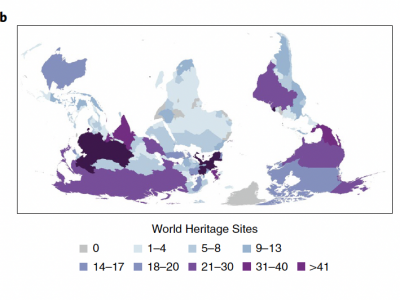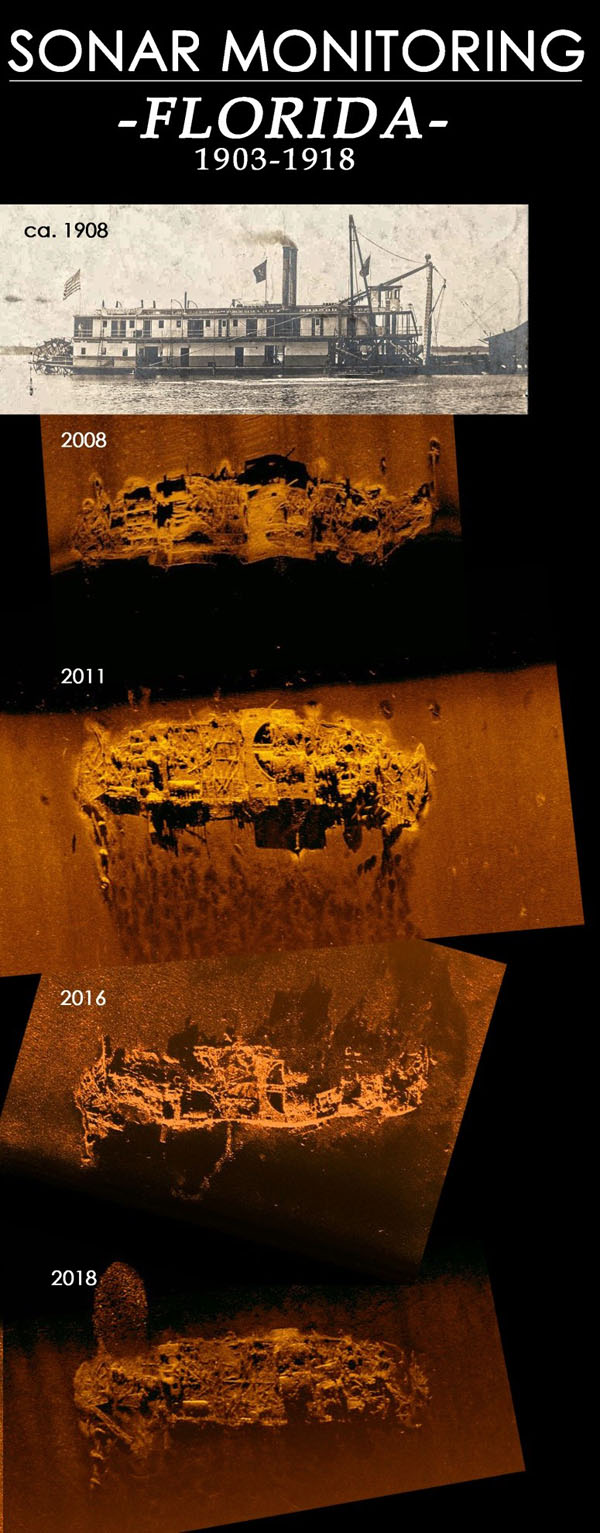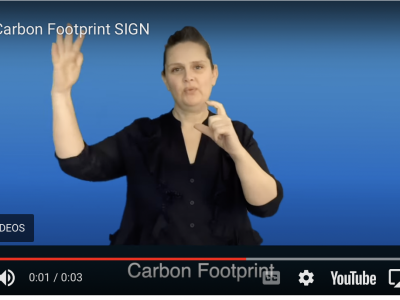
The Dredge Florida: Impacts of Larger Storms on Submerged Resources
Written by: Allyson Ropp
Cultural heritage is found on land and under the sea. Like those on land, the ones under the waves are feeling the impacts of changing climate. As the climate continues to change, the waters are not only rising. But they are also warming. This warming is creating stronger hurricanes, as seen by an increase in Category 4 and Category 5 hurricanes. As warmer water spreads, hurricanes have more time to grow in strength. These storms can have adverse effects on shipwrecks.
Figure. Change over time of the dredge Florida site
 While there are many examples throughout coastal environments of storm impact on wrecks, one is present in St. Augustine and has been monitored for such changes. This is the dredge Florida. The dredge was built in 1904 by Merrill & Stevens in Jacksonville, Florida. Owned by the U.S. Army Corps of Engineers, it worked throughout eastern Florida to dig the intracoastal waterways, improve navigation on the St. Johns River, and remove trees from Florida waterways. In 1918, Florida sank beneath the waves after facing a fierce storm, where it still resides today.
While there are many examples throughout coastal environments of storm impact on wrecks, one is present in St. Augustine and has been monitored for such changes. This is the dredge Florida. The dredge was built in 1904 by Merrill & Stevens in Jacksonville, Florida. Owned by the U.S. Army Corps of Engineers, it worked throughout eastern Florida to dig the intracoastal waterways, improve navigation on the St. Johns River, and remove trees from Florida waterways. In 1918, Florida sank beneath the waves after facing a fierce storm, where it still resides today.
The site of the Florida has been monitored using side scan sonar since 2008. Through the data gathered of the site over a ten year period, significant changes are visible. Much of the initial change noted was the movement of sand around the site. Between 2008 and 2011, more of the site was exposed. This changed between 2011 and 2016, during which more of the site was buried. The biggest change came between 2016 and 2018, following Hurricane Matthew and Hurricane Irma. The superstructure of the vessel has been destroyed and the site much flatter along the ground. The steel structures have become more entangled across the wreck making it more difficult to determine their function. Overall, Florida has gone from a visible and detailed wreck structure to a ship-shaped jumble of steel and iron. This change occurred because of the shear forces of the hurricanes that washed over the wreck.
While there is very little we can currently do to protect these sites from hurricane damage, these submerged sites can still aid to understand heritage at risk. Monitoring for change after storms and other natural events allows archaeologists to build up an understanding of the impact such events have on cultural resources. That information can aid in the decision making process for protection of these and other sites affected by environmental changes.
blog post by Allyson Ropp HARC committee (Heritage at Risk)






